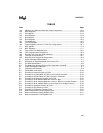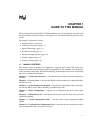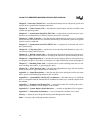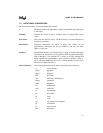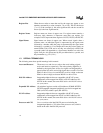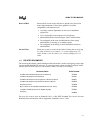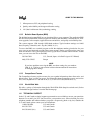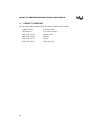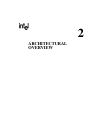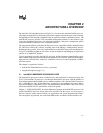
Intel386™ EX EMBEDDED MICROPROCESSOR USER’S MANUAL
1-4
Register Bits When the text refers to more that one bit, the range may appear as two
numbers separated by a colon (example: 7:0 or 15:0). The first bit shown
(7 or 15 in the example) is the most-significant bit and the second bit
shown (0) is the least-significant bit.
Register Names Register names are shown in upper case. If a register name contains a
lowercase, italic character, it represents more than one register. For
example, PnCFG represents three registers: P1CFG, P2CFG, and P3CFG.
Signal Names Signal names are shown in upper case. When several signals share a
common name, an individual signal is represented by the signal name
followed by a number, while the group is represented by the signal name
followed by a variable (n). For example, the lower chip-select signals are
named CS0#, CS1#, CS2#, and so on; they are collectively called CSn#.
A pound symbol (#) appended to a signal name identifies an active-low
signal. Port pins are represented by the port abbreviation, a period, and
the pin number (e.g., P1.0, P1.1).
1.3 SPECIAL TERMINOLOGY
The following terms have special meanings in this manual.
Assert and Deassert The terms assert and deassert refer to the act of making a signal
active and inactive, respectively. The active polarity (high/low) is
defined by the signal name. Active-low signals are designated by a
pound symbol (#) suffix; active-high signals have no suffix. To assert
RD# is to drive it low; to assert HOLD is to drive it high; to deassert
RD# is to drive it high; to deassert HOLD is to drive it low.
DOS I/O Address Integrated peripherals that are compatible with PC/AT system
architecture can be mapped into DOS (or PC/AT) addresses 0H–
03FFH. In this manual, the terms DOS address and PC/AT address
are synonymous.
Expanded I/O Address All peripheral registers reside at I/O addresses 0F000H–0FFFFH.
PC/AT-compatible integrated peripherals can also be mapped into
DOS (or PC/AT) address space (0H–03FFH).
PC/AT Address Integrated peripherals that are compatible with PC/AT system
architecture can be mapped into PC/AT (or DOS) addresses 0H–
03FFH. In this manual, the terms DOS address and PC/AT address
are synonymous.
Processor and CPU Processor refers to the Intel386 EX processor including the
integrated peripherals. CPU refers to the processor core, which is
based on the static Intel386 SX processor.




